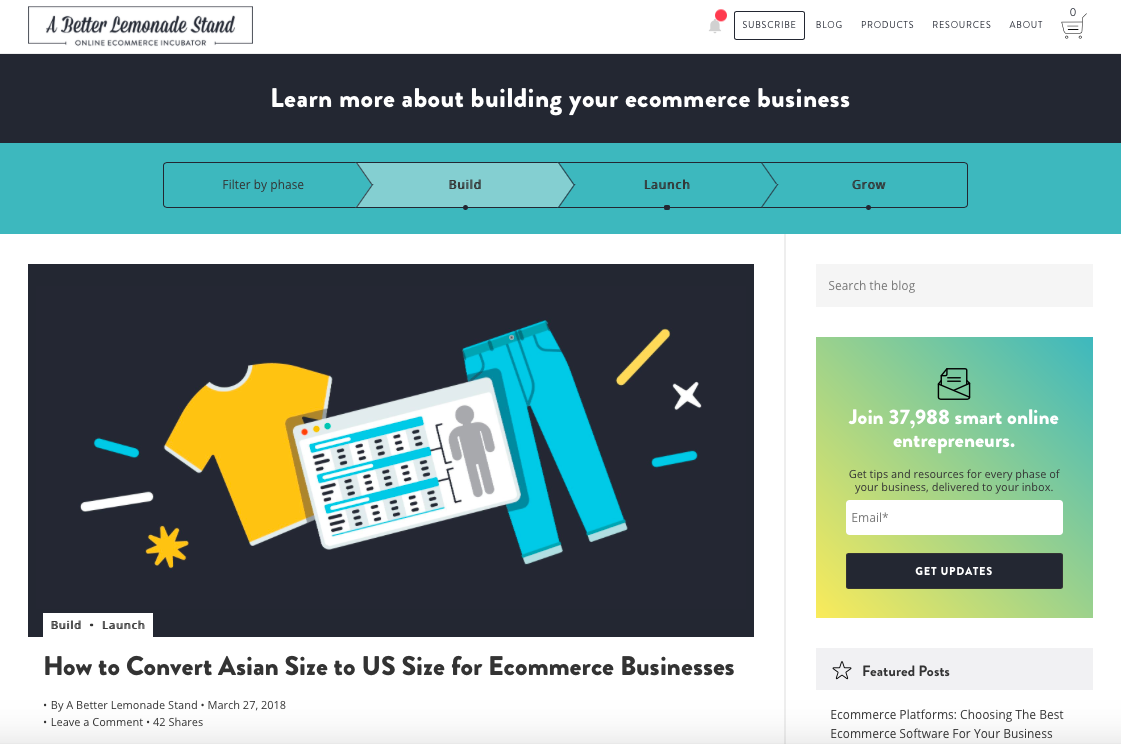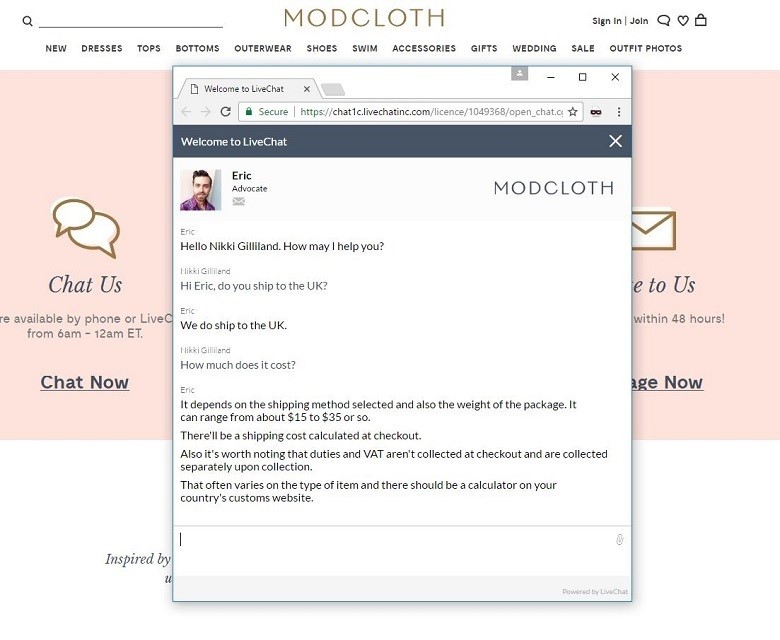Nurture your customers and they will see you through explosive growth
E-commerce is one of the fastest growing industries.
As of 2017, there are roughly two to three million e-commerce stores in the world, excluding China, reports PipeCandy.
Global e-retail revenues are projected to grow to the US $4.88 trillion in 2021, reports Statista.

Along with this, the buying cycles are much shorter. The number of induced repeat sales is more. Despite these positives, plenty of online stores are struggling to make profits.
The reason is simple.
Even though the number of consumers who prefer online shopping is on the rise, the abundance of choice enables them to hop-n-shop from multiple online brands selling similar products instead of sticking to a single brand.
Scaling is an issue for any e-commerce store which is unable to foster customer acquisition and loyalty. Anyone who has been in this business for long will agree.
In this article, I share the eight tips and tricks I’ve learned from building e-commerce websites for some of the best tech companies, for the last four years. These tips will help you scale your e-commerce store to increase your bottom line, at almost zero cost.
1. Design a stellar landing page
A landing page if done right is a high converting platform. Almost 96% of your visitors are not willing to buy from you when they arrive at your e-commerce landing page, according to Marketo.
That’s true! The reasons are many. Some of them include non-persuasive content, low-quality images, and poor site navigation.
Therefore, invest in a good landing page design especially if you plan to run flash sales, time-bound referral programs or even launch a new product line.
To promote their new hair styling product, international beauty brand TYME set up a landing page featuring minimal content and a compelling CTA.
When KlientBoost added product images and a CTA of Buy Now to each image, Q-See’s conversions increased by 124%.


After designing a landing page, constantly A/B test elements such as headlines, colors, CTA’s and even the product images to measure their impact on conversions and bounce rates.
2. Optimize your search engine ranking
93% of all online activities begin with a search, reports Search Engine Journal.
If you are an online store that has a limited service area or depends on local traffic, SEO is key to your business growth. In fact, “Near me” searches on Google have doubled in the last two years, according to Search Engine Watch.
Moreover, a Monetate e-commerce Quarterly report reveals conversion rates of Q3 2016 to be around 2.50%. This means for every 100 customers visiting the website, two or three moved towards a purchase.
Therefore, incorporate both long-term and short-term online marketing methods such as PPC and SEO to improve your e-commerce traffic. Do a thorough keyword research of your homepage and product/services pages.
Use tools like SEMrush to study the keywords on which your competitors are ranking. Optimize your website content, distribute backlinks and ensure you list your business on relevant directories and forums using location or product/service as the main keyword.
Also read: How To Win at Google: A Crash Course on SEO
3. Recommend products on the website
According to Forrester, product recommendations contribute up to 30% of e-commerce revenues. Tech giant Amazon first pioneered the concept to nudge their customers to buy more.
So if you are a first-time visitor on Amazon’s website, you will immediately notice a section called “Deals recommended for you”.

Three seconds in and you are already hooked on to the discounts up on offer on the website. Don’t make your customers work towards finding a good deal on your site or search for other products that they may need. Today’s consumers despise interacting with online stores that make them work.
Online wine cellar Handpicked Wines understand that and has found a nifty way to make product recommendations.

Source
From clear-cut navigation and their value proposition to testimonials and other offerings – the online store has included every element on the product page that would help in convincing the consumers to buy from them.
4. Ensure your email marketing is on point
With email expected to reach 90.9% of internet users by 2019, it is nowhere close to dying, reports Statista.
70% of customers still choose emails as a way to communicate with businesses. No wonder, the average open rate of email campaigns across domains is as high as 23%!
There are three types of emails that you should ideally send to your customers.
A. Welcome series
Getting a welcome email from the e-commerce store once a customer subscribes to the newsletter or makes his first purchase has become a norm.

Source
B. Cart recovery emails
The average online shopping cart abandonment rate across the globe is 69.23% which means they lose more than half of the sales from right under their noses. Therefore, sending emails to alert the consumer about the items he has put in the shopping cart is an effective strategy.

Create a sense of urgency around the abandoned product. Run a flash sale or give one for one free. Such emails can nudge the customer to complete the transaction.
Also read: Your comprehensive guide to successful email newsletter marketing
C. Re-engagement reminders
Marketers lose one fourth of their email database due to attrition which means if you don’t keep your customers engaged, they will move on. Since customer loyalty is a big issue in the e-commerce landscape, it is necessary to send re-engagement messages from time-to-time.
Online beauty store Birch Box leverages the emotional quotient by offering premium, editor-handpicked sample boxes, as seen below:

Source
EmailMonks is one such production partner that designs and codes responsive email templates and newsletters for you.
5. Construct a friendly push strategy
Push notifications are ruling the digital landscape for three years. Since 70% of consumers find all types of push notifications to be valuable, it is no wonder push is considered an integral part of the marketing strategy across industries (Responsys).
Push notifications can help you to target right consumers at the right time as the technology used segments them on the basis of their demographics and website/mobile activity. It is also difficult to miss out on push notifications on mobile and desktop as compared to emails that easily get lost in the inbox.

Source
The different ways in which you can use the push strategy to boost customer engagement are:
- To recover abandoned shopping carts;
- To notify customers about an ongoing sale or back-in-stock products;
- To share location-based deals;
- To send time-sensitive price alerts;
- To re-engage with inactive customers;
- To keep the customer informed about shipping;
- To recommend products based on browsing or purchase history.
Since a push message is considered to be a bit intrusive, cautiously time your message.
6. Build a PWA for your e-commerce store
Google first introduced the concept of a Progressive Web App (PWA) in 2015 with an intention of making the mobile user experience more pleasant. Today, an impressive 80% of e-commerce consumers use their smartphones to browse through the store, look up reviews, and find better deals. (OuterBox)
A PWA eliminates the hassle of downloading an app, offers a better loading experience, and sends push notifications on the device even when the web app is not running. Speaking from a ranking perspective, a PWA is also discoverable by search engines.
A few popular e-commerce brands that have PWA-enabled websites are Alibaba, Trivago, Uber and Sephora. The introduction of Flipkart Lite, the PWA of Indian online store Flipkart, increased the user’s time-on-site to 3.5 seconds and ensured 40% higher re-engagement rate.

Source
This led to a 70% greater conversion rate among those customers who arrived at the Flipkart web app through Add to Home screen option.
7. Use blogging as a nurturing tool
The top three content marketing tactics in 2018 are blogging (65%), social media (64%) and case studies (64%), reports LinkedIn Technology Marketing Community.
It isn’t surprising to see blogging has become a common practice for any business. In fact, it is an effective tool for e-commerce stores to inform, educate and nurture customers.
The blog of A Better Lemonade Stand, an online e-commerce incubator, empowers entrepreneurs with all the content they need to grow their business at different stages. The blog posts are categorized into three major filters – Build, Launch and Grow.

The blogs majorly follow themes such as product selection, sourcing, conversion optimization and shipping and delivery. Their Facebook page has an increasing number of followers and this further adds to their community building.
8. Chat live for effective ORM
Live chat is considered the leading choice for communication by consumers purely because of the intimacy it offers. A recent Forrester study revealed a 10% increase in the average order value after customers engaged with a brand on chat before making a purchase.
The average response time on chat is 2 minutes and 40 seconds. ModCloth, for example, is not only known for its friendly tone but also for being proactive and messaging the visitor as soon as he lands on the website.

Source
A live chat is a versatile platform for boosting customer satisfaction rates which means don’t just restrict the use of live chats to only helping customers. Ask for feedback as well. 45% of businesses using a live chat tool don’t ask for feedback. How would you know if your customers are happy or not?
Also read: 4 made-in-Singapore chatbots that can raise your company’s productivity
Closing thoughts
Start with these 8 easy tips to scale your e-commerce store smoothly. Is there any strategy that worked particularly well for you? Do share in the comments section.
—-
Mayank Pratap is the founder of Engineerbabu, which helps startups, enterprises and owners grow their business by building high-class IT solutions. 30+ of their projects are funded by VCs. Many of their clients are a part of Y Combinator.
e27 publishes relevant guest contributions from the community. Share your honest opinions and expert knowledge by submitting your content here.
Featured Image Copyright: vladstar / 123RF Stock Photo
The post 8 proven tips for successfully scaling an e-commerce business appeared first on e27.
Source: e27























